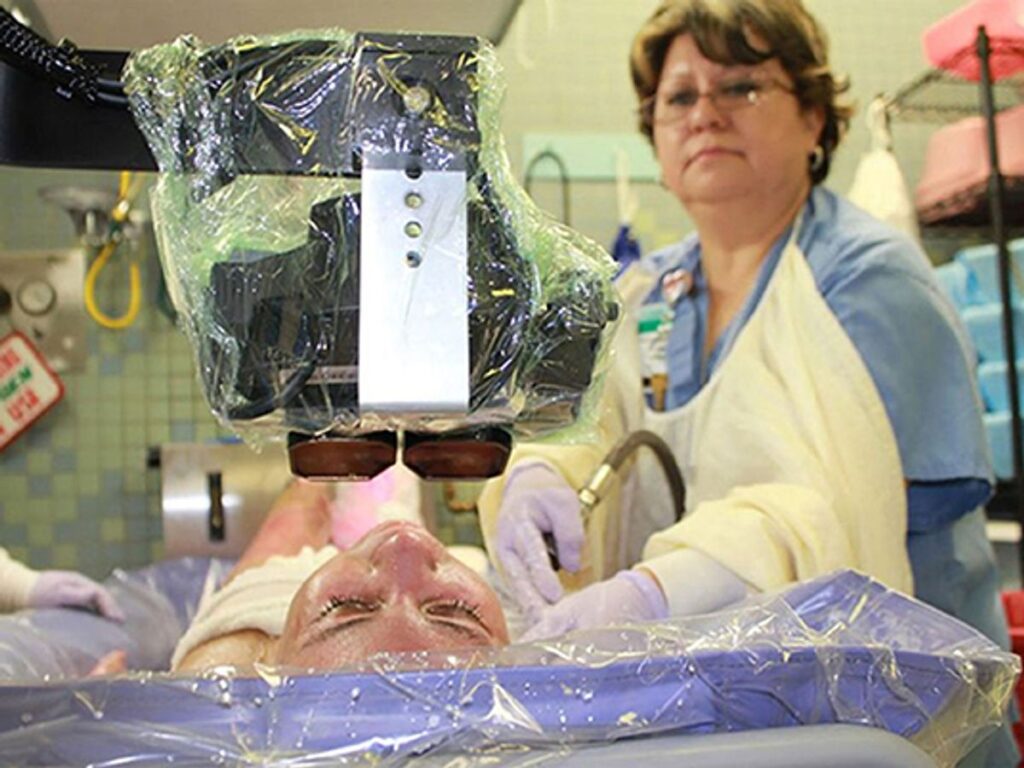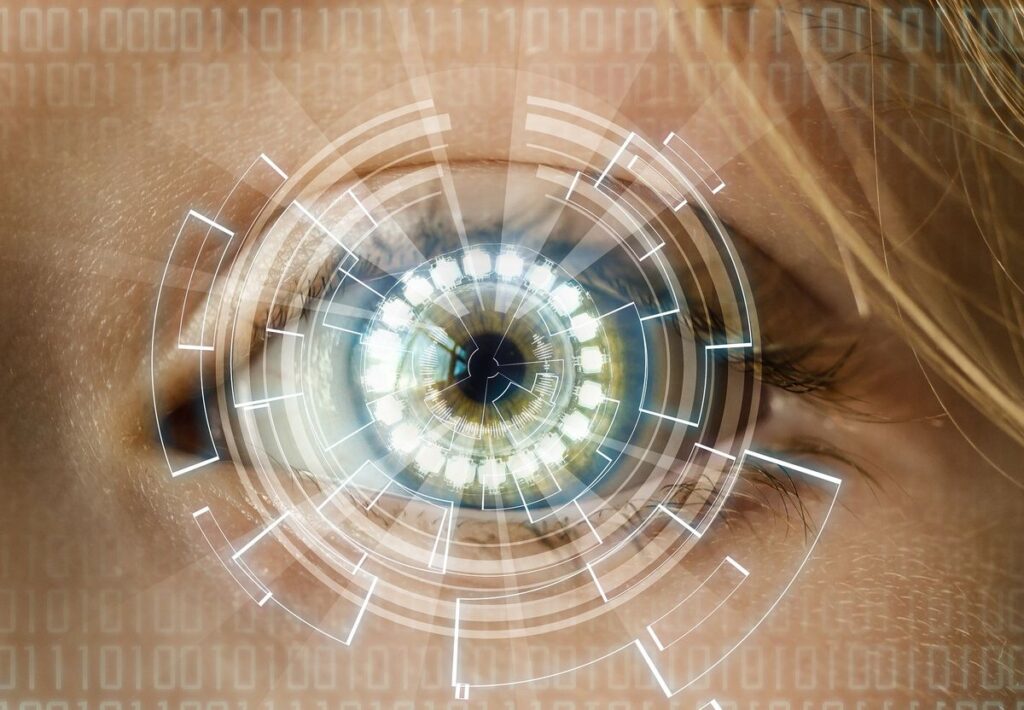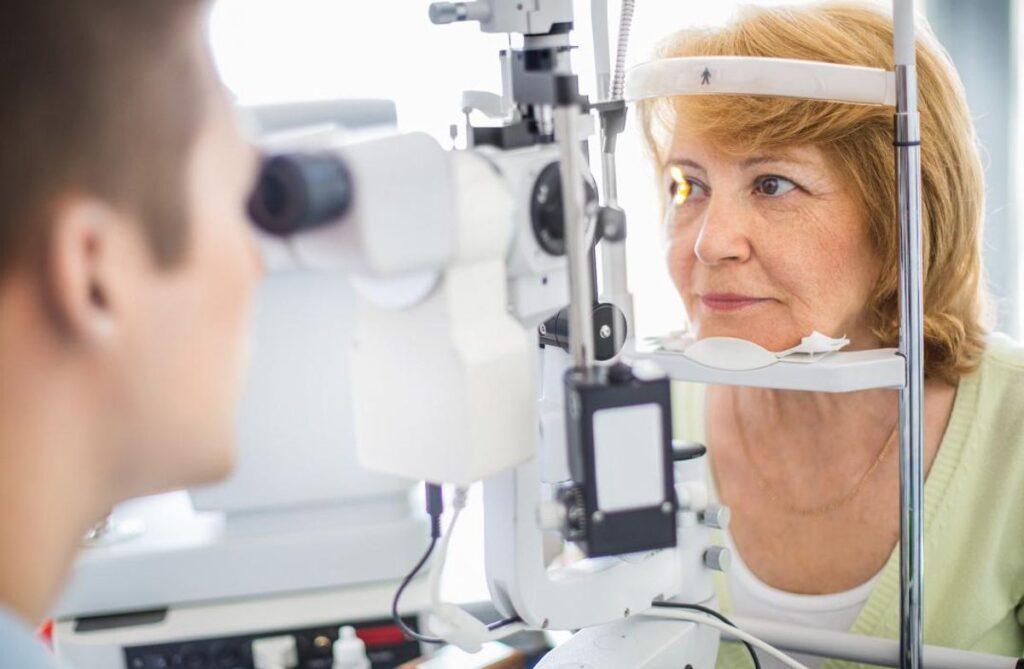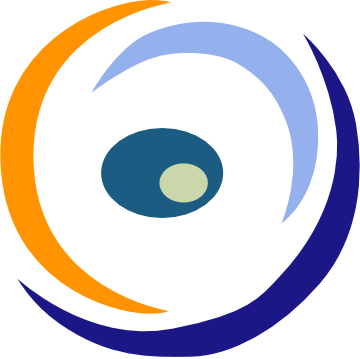The rapid pace of innovation in eye care technology is transforming the landscape of ophthalmology and improving the lives of millions of people worldwide. From advanced diagnostic tools and personalized treatment approaches to wearable devices and telemedicine solutions, these technological advancements are revolutionizing every aspect of vision care. By embracing these innovations, health professionals can deliver more precise diagnoses, tailored treatments, and better patient outcomes, ultimately advancing global vision health.
Key Takeaways
- Innovative eye care technologies are providing more accurate diagnostics and personalized treatments, enhancing patient care.
- Telemedicine and online consultations offer accessible and cost-effective eye care options, reshaping traditional optometry.
- Early detection and management of pediatric eye conditions are crucial, with technology aiding in effective screening and care.
- Digital devices impact eye health, necessitating strategies for prevention and protection against digital strain and related conditions.
- Global initiatives are leveraging mobile apps, AI, and open-source platforms to improve eye care delivery in remote areas.
Advances in Vision Testing Technology: A New Era in Eye Care
Integrating Modern Tech at Urban Optiks Optometry
At Urban Optiks Optometry, the integration of cutting-edge technology is not just a trend, it’s a commitment to excellence in eye care. The use of advanced diagnostic tools and digital lenses ensures a personalized approach to vision health.
- Eye Exam: Utilizing the latest equipment for comprehensive assessments.
- Contact Lens Fitting: Precision and comfort through digital measurements.
- Dry Eye Evaluation: In-depth analysis with state-of-the-art devices.
- Retinal Imaging: High-resolution images for detailed retinal health insights.
Embracing modern technology allows Urban Optiks Optometry to offer a level of diagnostic precision and treatment customization that sets a new standard in the field.
The array of services provided, from LASIK surgery consultations to the fitting of customized frames, is enhanced by the digital revolution in eye care. This ensures that every patient receives the most advanced care available, tailored to their unique needs.
The Role of Advanced Diagnostics in Personalized Treatment
The integration of advanced diagnostics in eye care has revolutionized the way optometrists approach personalized treatment. Urban Optiks Optometry is at the forefront of this transformation, utilizing technologies such as artificial intelligence (AI), augmented reality (AR), and virtual reality (VR) to deliver tailored vision care solutions.
The use of digital tools in diagnostics not only improves the accuracy of assessments but also enhances the overall patient experience by making eye care more accessible and efficient.
With the advent of teleophthalmology, patients can now receive expert consultations and follow-ups from the comfort of their homes. This shift towards digital eye care services is a testament to the industry’s commitment to innovation and patient-centered care.
- AI-driven diagnostics are setting new standards for precision and early detection of eye conditions.
- AR and VR applications in vision testing offer immersive experiences that aid in better understanding and management of visual impairments.
- Digital tools streamline the workflow, allowing for quicker diagnosis and more effective treatment planning.
Wearable Devices and Their Impact on Vision Health
The advent of smart contact lenses and AR glasses marks a significant milestone in digital eye care. These devices not only offer enhanced visual aids for those with low vision but also enable real-time health monitoring. For instance, smart contact lenses can detect changes in intraocular pressure, aiding in the early detection and management of glaucoma.
- Smart contact lenses: Continuous monitoring of intraocular pressure
- AR glasses: Enhanced visual capabilities for low vision
Wearable technologies are empowering individuals to proactively manage their vision health, providing a blend of therapeutic and assistive benefits.
The potential of wearable devices in eye care extends beyond immediate visual aid; it opens up avenues for comprehensive health tracking and personalized treatment strategies. As these technologies evolve, they promise to integrate seamlessly into our daily lives, revolutionizing the way we approach vision health.
Pediatric Eye Conditions: Strategies for Early Detection and Management

The Importance of Early Screening for Children’s Vision
Early screening for children’s vision is not just a preventive measure; it is a critical step in ensuring the developmental and educational success of a child. Healthy vision is closely linked to learning, and the ability to see clearly can significantly affect a child’s performance in school.
Early detection of vision problems can lead to interventions that may prevent or reduce the impact of long-term eye conditions.
Recognizing the signs of vision issues is essential for parents and caregivers. Here is a list of common indicators that may suggest a child should be screened:
- Frequent eye rubbing or blinking
- Short attention span
- Avoiding reading and other close activities
- Turning of an eye in or out
- Seeing double
- Tilting the head to see better
It is important to schedule regular eye exams with a pediatric ophthalmologist to monitor and manage a child’s visual health. By doing so, we can help bridge the gap in healthcare disparities and contribute to a future of improved vision for all children.
Parental Guidance and Care in Pediatric Ophthalmology
In the realm of pediatric ophthalmology, the role of parents is paramount. Early involvement and vigilance by caregivers can significantly influence the trajectory of a child’s visual development. Regular check-ups and awareness of developmental milestones are critical in identifying potential issues before they escalate.
- Monitor your child’s eye health regularly.
- Look for signs of discomfort or difficulty in seeing.
- Ensure a balanced diet rich in eye-healthy nutrients.
- Limit screen time to reduce digital strain.
The journey of maintaining and improving a child’s vision is a collaborative effort between eye care professionals and parents. It is essential to create an environment conducive to visual health and to seek professional advice when concerns arise.
The integration of advanced technologies, such as the Digital PD ruler, is revolutionizing pediatric eye care. This tool, powered by AI technology, enhances the accuracy of measurements, leading to improved patient experiences. However, challenges such as skepticism and regulatory concerns must be addressed to achieve wider adoption.
Telemedicine: A New Frontier for Pediatric Eye Care
The advent of telemedicine in pediatric eye care marks a significant shift in how services are delivered to our youngest patients. Telemedicine has become increasingly prevalent in eye care, particularly in remote or underserved areas. This innovative approach is not just about convenience; it’s about ensuring timely evaluations and follow-up care, which are crucial for early detection and intervention.
- Remote consultations allow for expert opinions without in-person visits.
- Virtual vision testing is now a reality, making eye care more accessible.
- Teleophthalmology services streamline the entire care process.
The integration of digital optometry tools is enhancing the patient experience and improving diagnostic accuracy. By leveraging these advancements, we are witnessing a revolution in eye care delivery that prioritizes patient needs and optimizes outcomes.
The benefits of virtual consultations extend beyond simple convenience. They open up new possibilities for reaching a wider audience, especially those in remote areas or with limited mobility. As we embrace these changes, we are not only revolutionizing pediatric eye care but also setting a new standard for the industry as a whole.
The Digital Transformation of Optometry: Embracing Virtual Eye Care

The Convenience of Online Consultations at Iayez
The advent of online consultations has revolutionized the way we approach eye care. Iayez has made it possible to access professional optometry services from anywhere, eliminating the need for physical travel to a clinic. This is particularly beneficial for individuals in remote or rural areas, where access to eye care professionals can be limited.
- Telemedicine improves access to eye care in rural areas.
- Data analytics tools enhance patient care and practice efficiency.
- Professional networking platforms connect optometrists for collaboration and knowledge sharing.
Embracing the digital shift, Iayez offers a seamless 30-minute consultation through a user-friendly chat interface, ensuring that your vision health queries are addressed promptly and effectively.
With a commitment to affordability and convenience, Iayez’s online services are a testament to the evolving landscape of eye care. For a modest fee of $25, patients can receive expert advice and have their prescriptions renewed without the burden of additional costs associated with traditional clinic visits. This model not only saves time but also opens up new possibilities for patient-centered care.
Telemedicine for Eyes: A Cost-Effective Solution
The advent of telemedicine in eye care has marked a significant shift in how services are delivered, particularly in areas where traditional optometry is less accessible. By leveraging digital platforms, patients can now engage in teleconsultations and benefit from remote monitoring, which not only enhances convenience but also promotes early detection and intervention of eye conditions.
The cost-effectiveness of virtual eye care is evident when considering the reduced need for physical infrastructure and the ability to bypass geographical barriers. Here’s a quick look at the pricing for some of the services offered by Iayez:
Embracing virtual consultations and telemedicine for eyes is not just about affordability; it’s about integrating digital tools in optometry to revolutionize eye care, improving efficiency, access, and patient satisfaction.
Teleoptometry is particularly transformative for underserved areas, where it bridges gaps and enhances diagnostic accuracy and treatment outcomes. As we continue to navigate the digital age, the role of telemedicine in optometry is poised to become even more integral to ensuring comprehensive and equitable eye care.
The Future of Eye Care: Accessibility and Patient-Centered Services
The evolution of eye care is marked by a significant shift towards patient-centered services and enhanced accessibility. Digital tools are at the forefront of this transformation, offering a range of services from vision testing to eyewear fitting and comprehensive telehealth consultations.
- Innovations in vision testing allow for more accurate and timely diagnoses.
- Eyewear fitting technology provides personalized options with greater convenience.
- Telemedicine services extend the reach of quality eye care to remote and underserved populations.
The integration of these digital advancements is not just a trend; it’s a commitment to ensuring that every individual has the opportunity to experience optimal vision health.
While the benefits are clear, the journey towards a fully integrated digital eye care system is not without its challenges. Ensuring data security, maintaining patient privacy, and providing equitable access are critical considerations that must be addressed to realize the full potential of these technologies.
The Impact of Digital Devices on Eye Health: Understanding and Prevention

Cataracts in the Digital Age: Causes and Precautions
The prevalence of cataracts is on the rise, with digital device usage being a contributing factor. Extended exposure to blue light from screens may accelerate the development of cataracts. It’s essential to understand the risks and implement precautions to safeguard our vision.
- Limit screen time to reduce blue light exposure.
- Use blue light filters on digital devices.
- Regularly update prescription glasses to include blue light protection.
- Ensure frequent breaks during prolonged device use to rest the eyes.
Embracing innovative eyeglasses technology solutions can enhance vision and comfort, offering a proactive approach to managing eye conditions in the digital era.
While online assessments provide convenience, they should complement, not replace, comprehensive in-person eye exams. The integration of advanced diagnostics and personalized treatment plans remains crucial for maintaining optimal eye health.
Maintaining Optimal Vision Amidst Technological Advancements
As we navigate through the digital revolution in optical care, it’s crucial to understand how to maintain optimal vision health. The integration of innovative technologies, AI, and smart eyewear has redefined the patient experience, enhancing efficiency, profitability, and patient engagement.
The rapid pace of innovation in eye care technology is not only transforming the landscape of ophthalmology but also improving the lives of millions worldwide.
To ensure that individuals can benefit from these advancements without compromising their eye health, several strategies can be adopted:
- Regular comprehensive eye exams to detect issues early
- Utilizing blue light filters on digital devices
- Taking frequent breaks to reduce eye strain
- Adopting ergonomic setups for work and leisure
By embracing these innovations, patients can receive more precise diagnoses, tailored treatments, and ultimately, better outcomes. It’s about leveraging the advancements to our advantage while being mindful of the potential risks to our vision.
Strategies for Protecting Eyes from Digital Strain
In the digital age, safeguarding our vision from the strain caused by prolonged screen time is crucial. Implementing regular breaks using the 20-20-20 rule—every 20 minutes, look at something 20 feet away for at least 20 seconds—can significantly reduce eye fatigue. Additionally, adjusting screen brightness and contrast to match the ambient lighting can help minimize glare and discomfort.
- Ensure proper lighting in your workspace to avoid glare on screens.
- Position your digital devices so that the top of the screen is at or slightly below eye level.
- Increase text size on devices to reduce squinting and strain.
- Consider anti-reflective coatings or blue light filtering glasses to mitigate harmful light emissions.
Embracing these strategies not only enhances visual comfort but also contributes to long-term eye health. Making small adjustments to our digital habits can lead to substantial benefits, allowing us to maintain optimal vision amidst technological advancements.
Global Eye Health Initiatives: Ensuring Vision for All

Sight as a Fundamental Right: Overcoming Barriers to Access
Ensuring that every individual has access to quality eye care is a cornerstone of global health equity. Vision is not a privilege; it is a fundamental right that enables learning, working, and engaging fully with the world around us.
- Awareness: Raising awareness is the first step towards change. It is crucial to educate communities about the importance of eye health and the existence of accessible services.
- Affordability: Cost should not be a barrier to eye care. Initiatives that provide affordable or free services are essential in overcoming financial obstacles.
- Accessibility: Bringing eye care services to remote and underserved areas can be achieved through mobile clinics and telemedicine platforms.
- Adoption: Encouraging the adoption of eye health practices requires culturally sensitive education and resources that resonate with local communities.
The challenge of providing universal eye care is not insurmountable. With concerted efforts and innovative approaches, we can bridge the gap and ensure that everyone has the opportunity to maintain good vision health.
Mobile Apps and AI: Bridging the Gap in Remote Areas
In the quest to revolutionize vision care, mobile applications, powered by artificial intelligence, are playing a pivotal role in remote areas. Robusta Ours has developed a transformative app that equips healthcare workers with the ability to conduct comprehensive eye examinations using just their smartphones. This innovation is particularly significant in regions where traditional access to eye care is hampered by geographical and logistical barriers.
The app not only facilitates the creation of patient records and maps examination locations but also ensures continuity of care through effective follow-up. By integrating virtual optometrist tools, the app offers AI diagnostics and remote monitoring, tailoring solutions to each patient’s needs. The future of eye care is unfolding as a tech-driven, efficient, and highly accessible service.
The success of such digital tools is evident in their ability to reach individuals who are otherwise reluctant or unable to seek treatment in urban centers. The global impact is profound, with a focus on low-income countries where the majority of the world’s visually impaired reside. Cataracts, a common condition in these regions, can now be more readily addressed, connecting patients to the surgical interventions they require.
The integration of AI and mobile technology in eye care is not without its challenges. Issues such as internet connectivity and logistical coordination must be addressed to ensure the seamless operation of these services. However, the benefits are undeniable, as highlighted by Sharon in a recent podcast discussing the innovative model of using remote specialists to provide medical expertise in under-resourced clinics.
The Role of Open-Source Platforms in Enhancing Eye Care Delivery
Open-source platforms are becoming increasingly vital in the realm of eye care, offering a collaborative environment for innovation and development. These platforms facilitate the sharing of resources and expertise, which can lead to more efficient and effective eye care solutions. By leveraging the collective knowledge of the global eye care community, open-source initiatives can accelerate the development of new technologies and methodologies.
- Eyewear platforms offer personalized eyecare through telemedicine, order tracking, and automated verification.
- Integration with existing structures promises innovation and efficiency in eye care.
The rapid pace of innovation in eye care technology is transforming the landscape of ophthalmology and improving the lives of millions of people worldwide.
Despite the potential, challenges such as data security, patient privacy, and equitable access must be navigated carefully. The successful adoption of open-source platforms in eye care will require ongoing education and training for professionals to fully harness their benefits.
As we strive towards a future where everyone has access to essential eye care, our global eye health initiatives are more crucial than ever. By joining forces with OPTIGRID, you become part of a community dedicated to ensuring vision for all. Don’t let another moment pass without making a difference. Visit our website, sign in, and discover how you can contribute to a world where good vision is a basic right, not a privilege. Together, we can bring the world into focus.
Embracing the Future of Eye Care: A Vision of Progress
The journey through the digital transformation of eye care has unveiled a future where accessibility, precision, and patient-centric services are at the forefront. As we have explored, the integration of advanced diagnostic tools, telemedicine, and mobile applications is not just a trend but a significant leap towards democratizing vision health. The potential to reach remote areas, provide affordable consultations, and offer personalized care through digital platforms is a testament to the power of innovation in ophthalmology. The promise of these technologies to enhance patient outcomes and streamline eye care services is immense. As we continue to navigate the evolving landscape of digital eye care, it is clear that embracing these changes is pivotal for the betterment of vision health worldwide. The revolution in eye care is here, and it is reshaping the way we think about, access, and manage our vision health for the better.
Frequently Asked Questions
How is advanced vision testing technology changing the future of eye care?
Advanced vision testing technology is revolutionizing eye care by enabling more precise diagnoses, personalized treatments, and better patient outcomes. It includes the integration of modern diagnostic tools, wearable devices, and telemedicine solutions that improve the quality and accessibility of vision care services.
What are the benefits of virtual eye care services like those offered by Iayez?
Virtual eye care services provide accessible and cost-effective solutions for individuals seeking eye care. They offer the convenience of online consultations, which means patients can receive expert advice and guidance on vision concerns from anywhere, at any time, without the need to visit a clinic in person.
Why is early screening for pediatric eye conditions important?
Early screening for pediatric eye conditions is crucial as it can lead to the detection and management of vision problems at a young age. This can prevent the progression of certain conditions and ensure proper visual development, which is essential for a child’s overall growth and learning.
How does telemedicine impact pediatric eye care?
Telemedicine opens a new frontier for pediatric eye care by providing remote access to specialized ophthalmologists for diagnosis and treatment. It allows for early intervention and ongoing management of eye conditions in children, even in remote or underserved areas, ensuring that all children can receive the eye care they need.
What strategies can help protect our eyes from digital strain due to the use of digital devices?
To protect eyes from digital strain, it is recommended to follow the 20-20-20 rule (every 20 minutes, look at something 20 feet away for 20 seconds), ensure proper lighting, adjust device settings for comfort, use anti-reflective screen protectors, and take regular breaks from screen use to rest your eyes.
How are global eye health initiatives using technology to ensure vision for all?
Global eye health initiatives are leveraging mobile apps, artificial intelligence, and open-source digital platforms to bridge the gap in eye care access, especially in remote areas. These technologies facilitate early detection, diagnosis, and treatment of eye conditions, contributing to the goal of universal vision health.

I am a seasoned software engineer with over two decades of experience and a deep-rooted background in the optical industry, thanks to a family business. Driven by a passion for developing impactful software solutions, I pride myself on being a dedicated problem solver who strives to transform challenges into opportunities for innovation.
